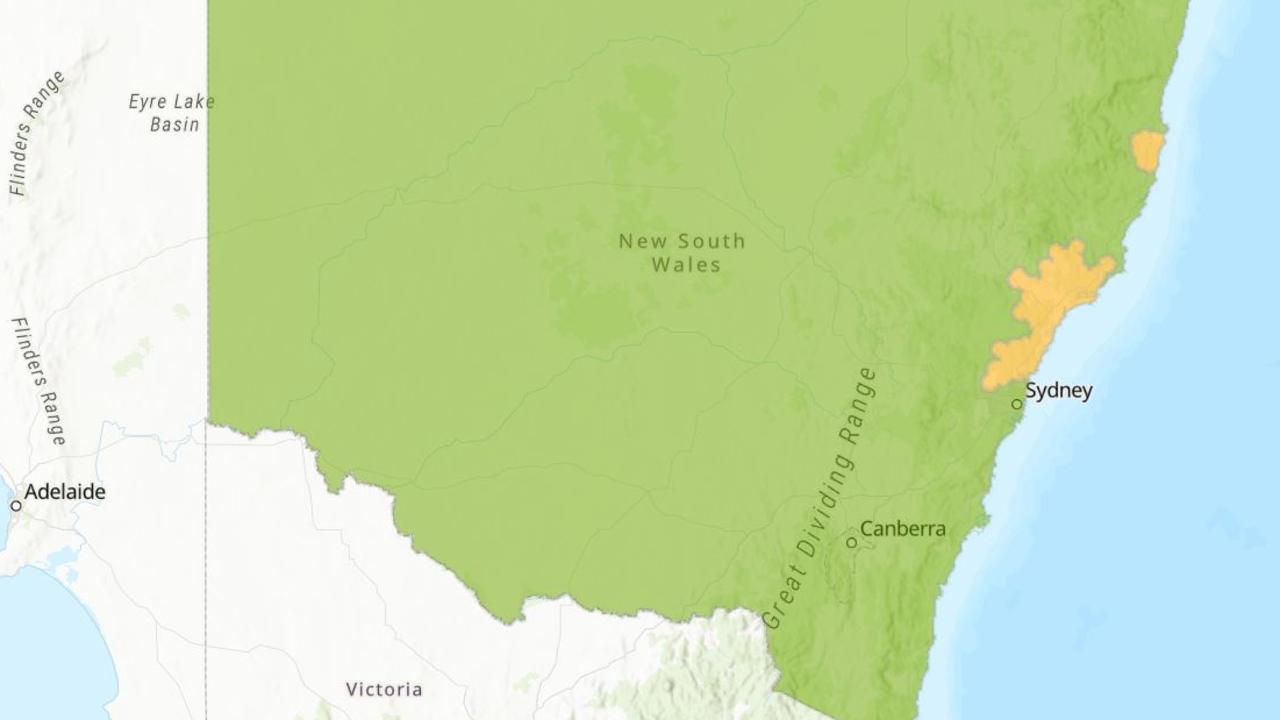Map shows Australia infiltrated by $70 billion threat
After a year of “tireless” eradication efforts, Australia has officially given up on trying to keep out a threat that could cost us a fortune.
After a year of “tireless” eradication efforts, Australia will cease attempts to eradicate a deadly bee parasite which could cost the honey industry $70 million a year if an outbreak where to occur.
The National Management Group (NMG) made the decision to shift efforts to managing the spread of varroa mite this week after the government’s $132 million response saw 30,000 hives euthanased in a bid to wipe out the mite.
Australia had been the last continent to remain free of varroa mite, which can weaken bees or cause death from viral infection, until they were detected in sentinel hives at the Port of Newcastle in NSW last year.
“The transition from an ‘eradication’ program to a ‘management’ program was concluded because of the many factors working against a possible eradication in Australia,” the NSW government said in a statement this week.

The NMG made the decision after considering factors such as evidence of illegal movement of bee hives, noncompliance on testing, and a recent spike in new detections.
“The recent spike in new detections, have made it clear that the varroa mite infestation is more widespread and has also been present for longer than first thought.”
NSW Senator and Deputy Nationals Leader Perin Davey said it was “very unfortunate” the eradication strategy didn’t work.
“This year, the number of outbreaks that we’ve seen – and the spread of outbreaks ranging from Kempsey to the New South Wales Riverina – it just makes it so hard,” she told ABC News. “I’m devastated for all the beekeepers who have seen some of their hives euthanised during the eradication process. But the industry has been calling for a transition to management. Once they saw that it was out of control. And I think it is the right move to make.”
The move towards management of the mite will cease mandatory euthanasia of hives, leaving beekeepers in red zones to decide on voluntary euthanasia.
Beekeepers will also be required to undertake hive testing and report the results to the Department of Primary Industries, and those with in management zones will be given access to miticide strips which kill the varroa mite without impacting the bees.
Senator Pocock said beekeepers had taken a “significant” financial hit during the eradication process.
“We saw some beekeepers who lost 80 per cent of their bees through the euthanasia process And this transition to management will at least soften the blow as we go forward so the economic hit won’t be as significant.”

Patrick O’Connor, Associate Professor and Director of the Centre for Global Food and Resources at the University of Adelaide said while a management response will slow the spread of the mite, it’s inevitable that they will spread throughout the entire country.
“It will be slowed and there might be controls. But it’s unlikely now that it’s on the continent that we can stop it getting anywhere except Tasmania,” he told news.com.au.
If a mite outbreak were to occur, it could have significant impacts on industries that rely on bee pollination.
Department of Agriculture, Fisheries and Forestry estimated an unhindered Varroa mite spread could cost horticulture production up to $1.31 billion over 30 years, while the
Federal Agricultural Minister Murray Watt confirmed an outbreak could cost the honey industry $70 million a year.
“The two agricultural crops that would be most impacted would be apples and almonds, followed by macadamia nuts, melons and cherries,” Professor O’Connor said.
However, while an outbreak would be costly, increased populations of varroa mite might not be entirely bad news.

Professor O'Connor said the spread of varroa mite and treatment of it as a biocontrol could have a positive impact by reducing Australia’s feral honey bee population.
“Feral honey bees are the honey bees that have escaped into the wild and now live across the entire continent … so when you knock them out, that can have an effect on some pollination. So the long term consequence is potentially very good for the bee industry, because they’re not competing with all of the federal bees and they’re going to get more honey benefit there.”
Less feral honey bees flying around could also benefit other creatures.
“Feral honey in a colony so they know how to be efficient takeover merchants, and they out compete a lot of native insects, bees and flies and wasps. They also take hollows from possums and sugar gliders and bats. So, knocking down could potentially be a great boon for nature.”





